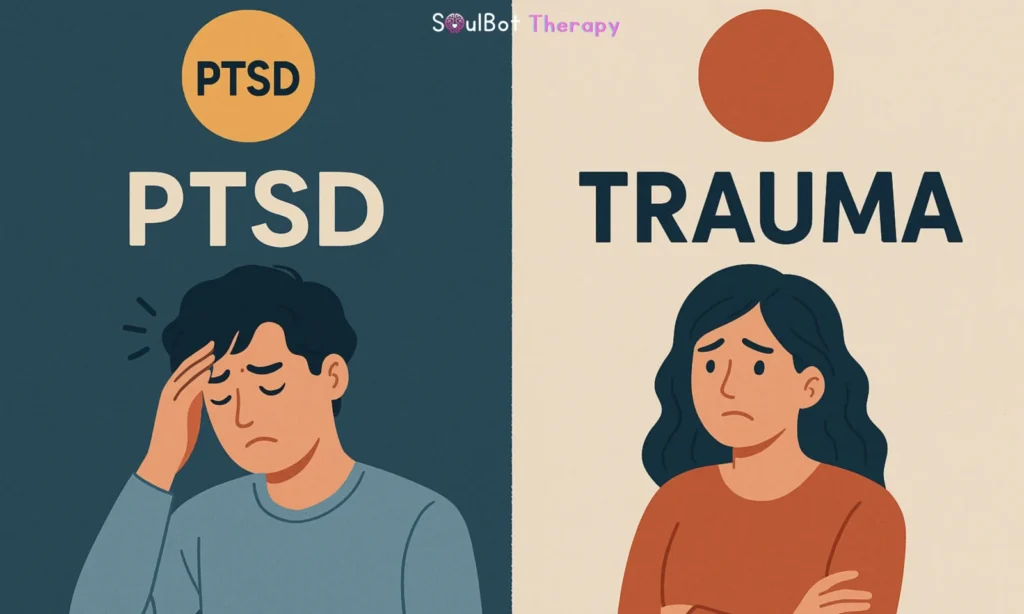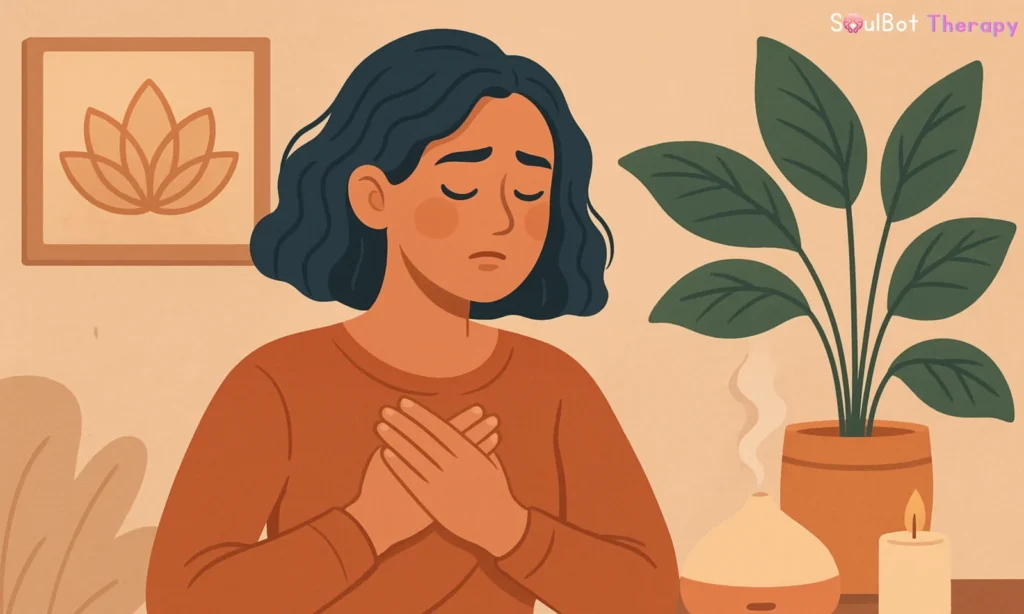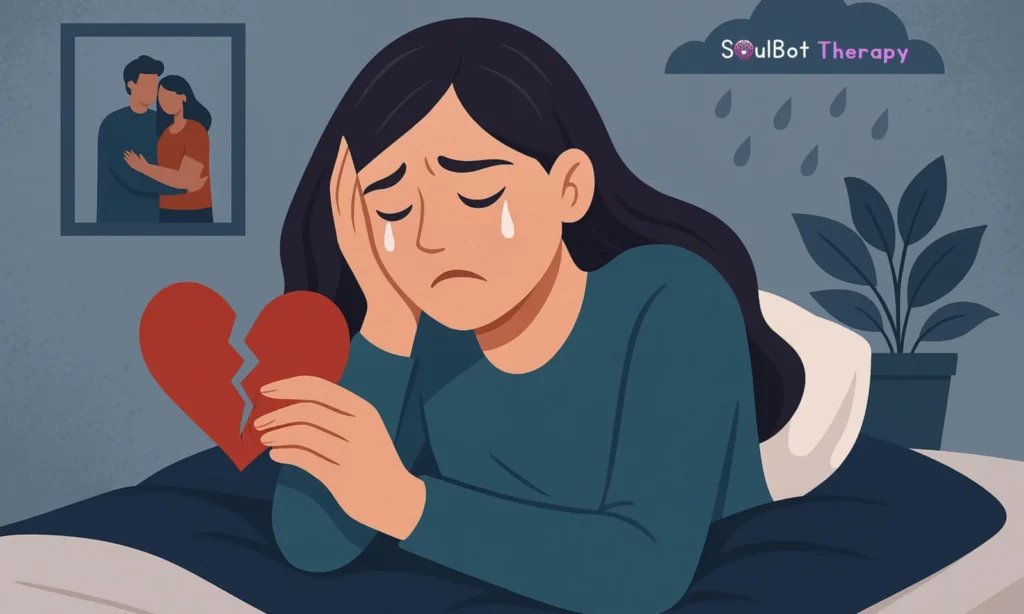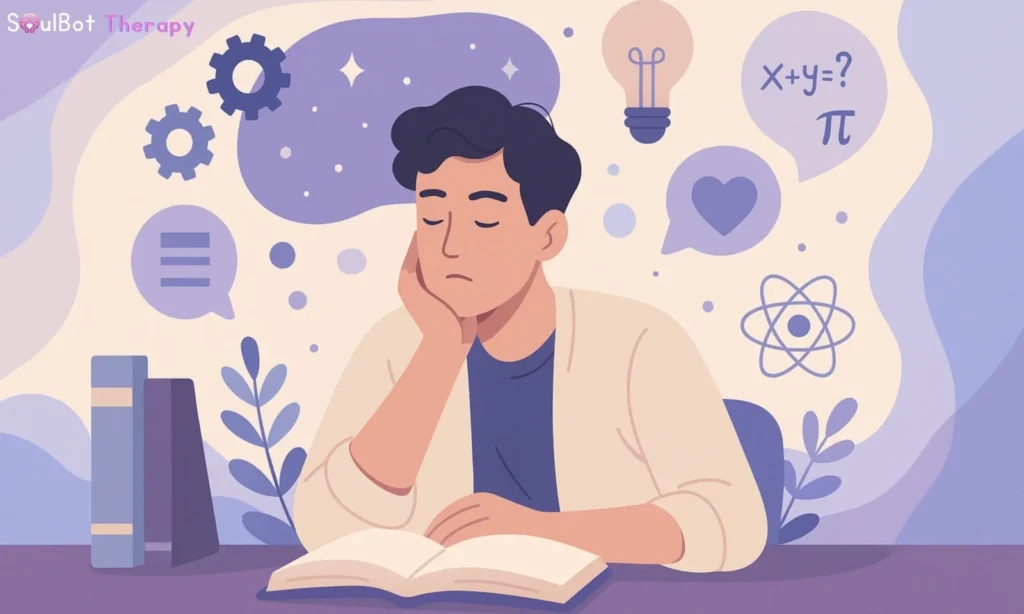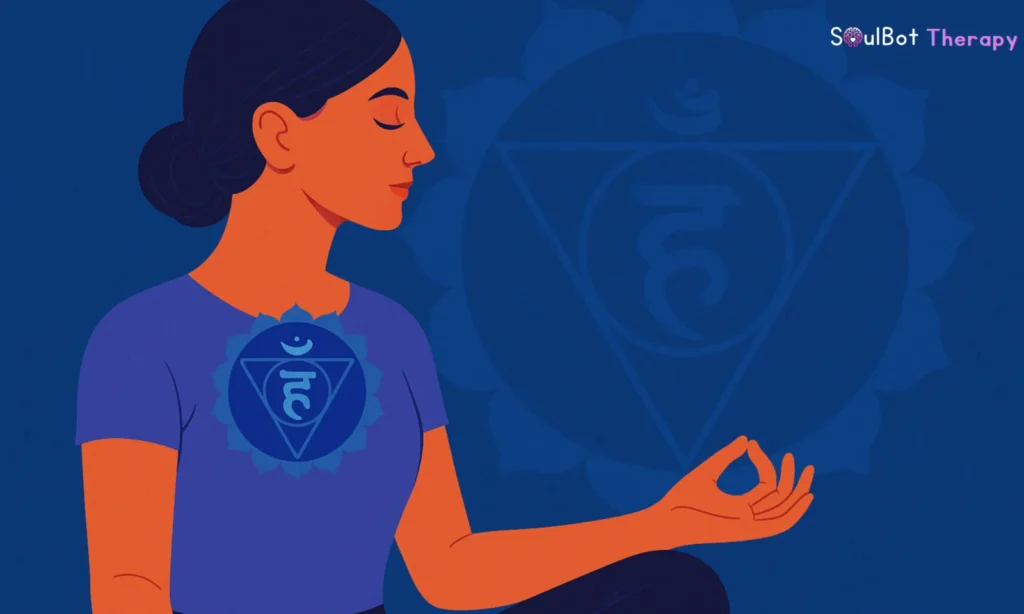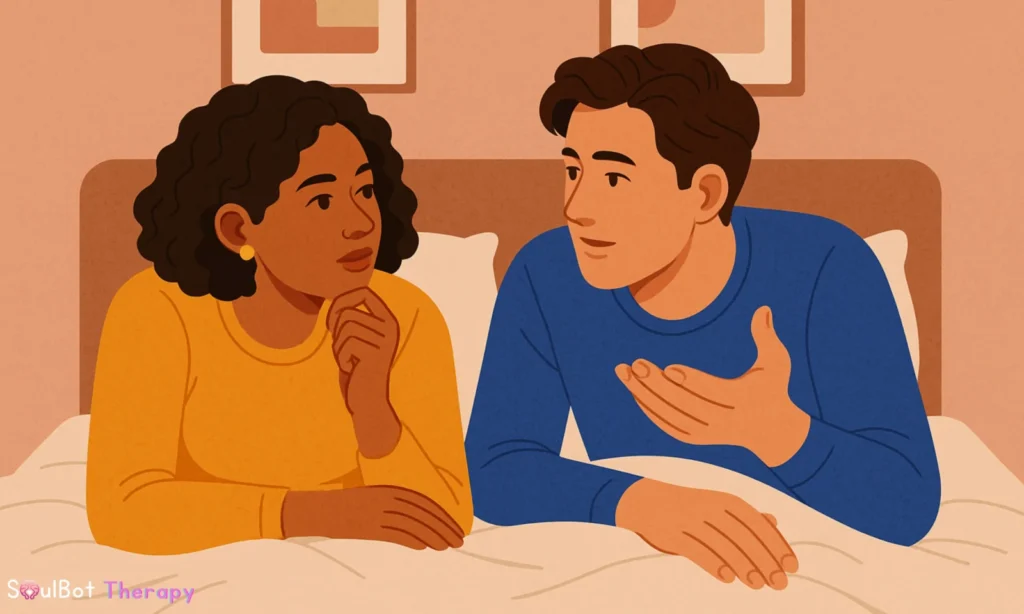Most people think trauma and PTSD mean the same thing. They don’t.
Trauma is the wound. PTSD is what can happen when that wound doesn’t heal the way it should.
You can go through a painful event without developing post-traumatic stress disorder, and you can live with PTSD long after the event is over. Understanding this PTSD vs Trauma difference helps you stop minimizing your pain and start rebuilding safety within yourself.
What’s the Difference Between PTSD and Trauma?
Let’s start simple.
- Trauma is your mind and body’s response to something overwhelming, such as an accident, abuse, loss, or even emotional neglect. It’s the shock that leaves an imprint.
- PTSD (Post-Traumatic Stress Disorder) develops when that imprint keeps replaying. It’s the pattern of re-experiencing, avoidance, and hyperarousal that lingers for weeks, months, or years.
In short, trauma is the event; PTSD is the ongoing reaction.
📊 SoulFact: According to the American Psychological Association (APA), about 1 in 11 people will develop PTSD at some point in their lives, but nearly everyone will experience trauma of some kind.
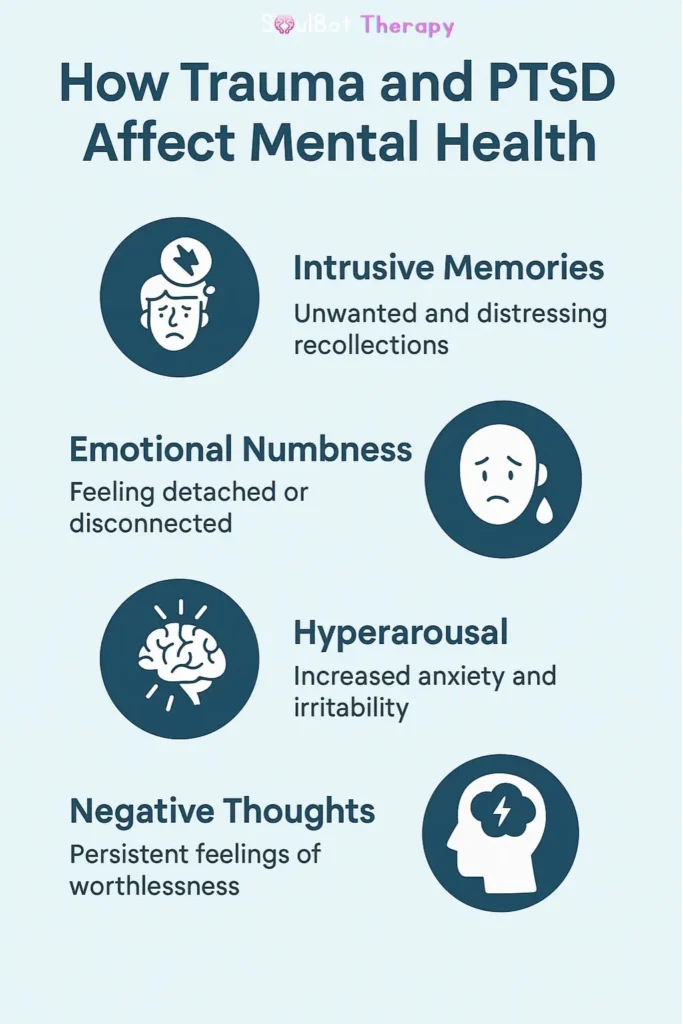
What Happens to the Brain During Trauma?
When you face danger, your amygdala sounds the alarm. Adrenaline floods your body, your heartbeat spikes, and your nervous system switches to fight, flight, or freeze mode.
In healthy recovery, the nervous system eventually resets. But when trauma overwhelms your coping capacity, that alarm stays on even when you’re safe.
That’s where symptoms like flashbacks, intrusive thoughts, and emotional numbness begin. This dysregulation explains why grounding techniques, breathwork, and nervous-system regulation are key in trauma recovery.
💡 Related SoulBot Read: How to Regulate Your Nervous System
When Does Trauma Become PTSD?
Not everyone with trauma develops PTSD. The distinction often depends on time and intensity.
You may have PTSD if symptoms persist for longer than a month and include:
- Re-experiencing (flashbacks, nightmares, intrusive memories)
- Avoidance of reminders or emotions
- Hypervigilance or exaggerated startle response
- Detachment or emotional numbness
- Distorted guilt or shame
If these experiences interfere with daily life, it’s more than just trauma; it’s a post-traumatic stress disorder, and it deserves care, not dismissal.
📊 SoulFact: The National Center for PTSD reports that up to 8% of adults will experience PTSD in their lifetime, often misdiagnosed as anxiety or depression.
Complex Trauma vs PTSD: Is There a Difference?
Yes, and it’s an important one.
Complex trauma develops from repeated exposure to distress like long-term abuse, neglect, or chronic instability. Instead of a single event, it’s years of emotional survival.
While PTSD focuses on specific memories, complex trauma shapes personality, attachment, and emotional regulation. It can lead to:
- Deep shame or self-blame
- Difficulty trusting others
- Emotional volatility or shutdown
- Feeling “stuck” in survival mode
Healing from complex trauma often involves rebuilding emotional safety and self-compassion, not just reducing symptoms.
How to Heal From Trauma and PTSD Safely?
Healing doesn’t mean forgetting; it means teaching your body and mind that the danger has passed.
Here’s where to begin:
- Grounding Techniques: Focus on your senses to return to the present.
- Therapy: Trauma-informed therapy (like EMDR or CBT) can reprocess painful memories.
- Body Awareness: Gentle movement, stretching, or yoga can release stored tension.
- Digital Support: SoulBot offers guided grounding, mood tracking, and reflection prompts for trauma recovery.
- Community: Support groups or online spaces normalize your experience.
🧠 Remember: You don’t need to relive your trauma to heal it you just need to reconnect with safety in small, consistent ways.
💬 Related SoulBot Read: Reclaiming Calm After a Panic Attack
💬 Final Thought- PTSD vs Trauma
Whether it’s trauma or PTSD, your pain is real and it’s valid. Healing isn’t about erasing the past; it’s about rebuilding trust in the present. Be patient with yourself. Although the nervous system learns safety slowly, it is capable of learning. This understanding will make it easier for you to distinguish between PTSD vs Trauma if you encounter such challenges in the future.
💬 Chat with SoulBot, your AI mental health companion, for daily grounding and emotional healing guidance.
